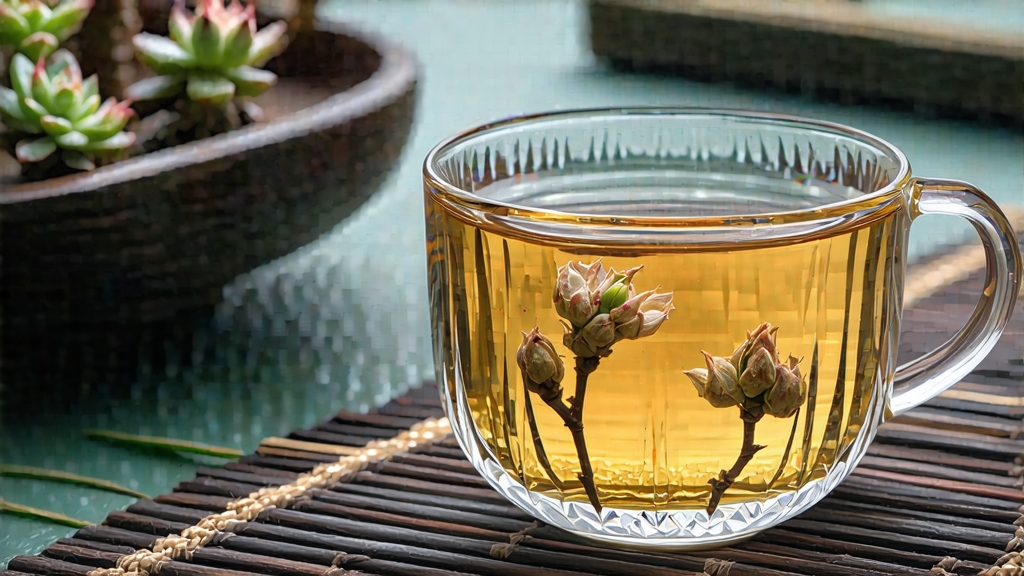
Bai Hao Yin Zhen—literally “White Hair Silver Needle”—is the quiet aristocrat of Chinese tea. To the uninitiated it looks like a handful of dormant twigs, yet the moment hot water kisses the downy buds they uncurl into miniature ivory lilies, releasing a fragrance that Chinese poets once likened to “the moonlight that forgot to leave the garden.” This essay invites the international reader to follow that moonlight from the granite hills of northern Fujian to the teapot on the table, tracing history, craft, and the subtle choreography of leaf and water.
-
Historical whispers
The first verifiable record of Yin Zhen appears in the 1796 edition of the Fuding County Gazetteer, noting that “imperial tribute of white buds” was collected that spring. At the time the buds were simply air-dried and sent to Beijing in small bamboo cylinders; the court found the liquor so gentle that it became the preferred morning drink of the Daoguang Emperor’s mother, who believed it cooled internal heat without shocking an empty stomach. Export began in 1891 when a Fuding merchant named Wu Dezhang steamed, packed, and shipped one chest to Hong Kong, where British tea tasters christened it “Silver Pekoe Tips.” By 1915 it won a gold medal at the Panama-Pacific Exhibition in San Francisco, sealing its global reputation. Yet throughout the twentieth century Yin Zhen remained scarce; the fragile harvest depends on a three-week spring window and on growers willing to forsake the higher yield of machine-cut green tea. Only after 2005, when the Chinese government granted Fuding white tea Protected Geographic Indication status, did production expand enough for specialty cafés from Melbourne to Montreal to offer it by the gram rather than by the myth. -
Terroir and taxonomy
White tea is not a single plant but a processing style, and Silver Needle is its purest expression. Authentic Yin Zhen must come from northern Fujian’s two historic counties—Fuding and Zhenghe—where the cultivars Fuding Da Bai and Zhenghe Da Bai develop unusually fat buds laden with amino acids. The region’s granitic soils drain quickly, forcing roots to dive deep for minerals, while the coastal fog slows photosynthesis, allowing the buds to stockpile L-theanine, the compound responsible for the tea’s brothy sweetness. Elevations between 300–800 m provide the 10 °C diurnal swing that growers call “the silk curtain,” coaxing a jasmine-lactone perfume into the leaf. Attempts to replicate Yin Zhen in Yunnan or Sri Lanka yield larger buds but flatter liquor, proving that terroir is as stubborn as dialect. -
The craft of “doing nothing”
Silver Needle is made by two deceptively simple steps: plucking and withering. Picking begins when the bud reaches 2.5–3 cm but before the first leaf unfurls—usually between 15 March and 5 April. Experienced pickers pinch at the precise node where the bud detaches with a soft pop, avoiding the fingernail crush that would oxidize the tip. A full day’s work yields barely 500 g of fresh material, which shrinks to 100 g after drying.
The buds are then spread one layer thick on bamboo trays woven from river reeds. For the next 36–48 hours they rest in a loft where louvered windows invite a slow dialogue between mountain breeze and indoor humidity. No rolling, no pan-firing, no kneading—just time. Enzymes nibble at chlorophyll, turning the bud silvery-white; polyphenols oxidize by less than 5 %, preserving a pistachio-green heart visible when you split a dried needle. Finally the trays are slid onto wicker racks above a charcoal brazier fired by longan wood. The temperature hovers at 40 °C, just warm enough to coax moisture from the core without caramelizing sugars. The entire cycle obeys the Confucian ideal of wu wei—effortless action—yet demands the alert passivity of a meditation master who senses every shift in scent: from fresh cucumber to wet limestone to faint honey.
- Grading the moonlight
Upon completion the tea is sorted into four unofficial grades. “Imperial Needle” consists only of buds longer than 2